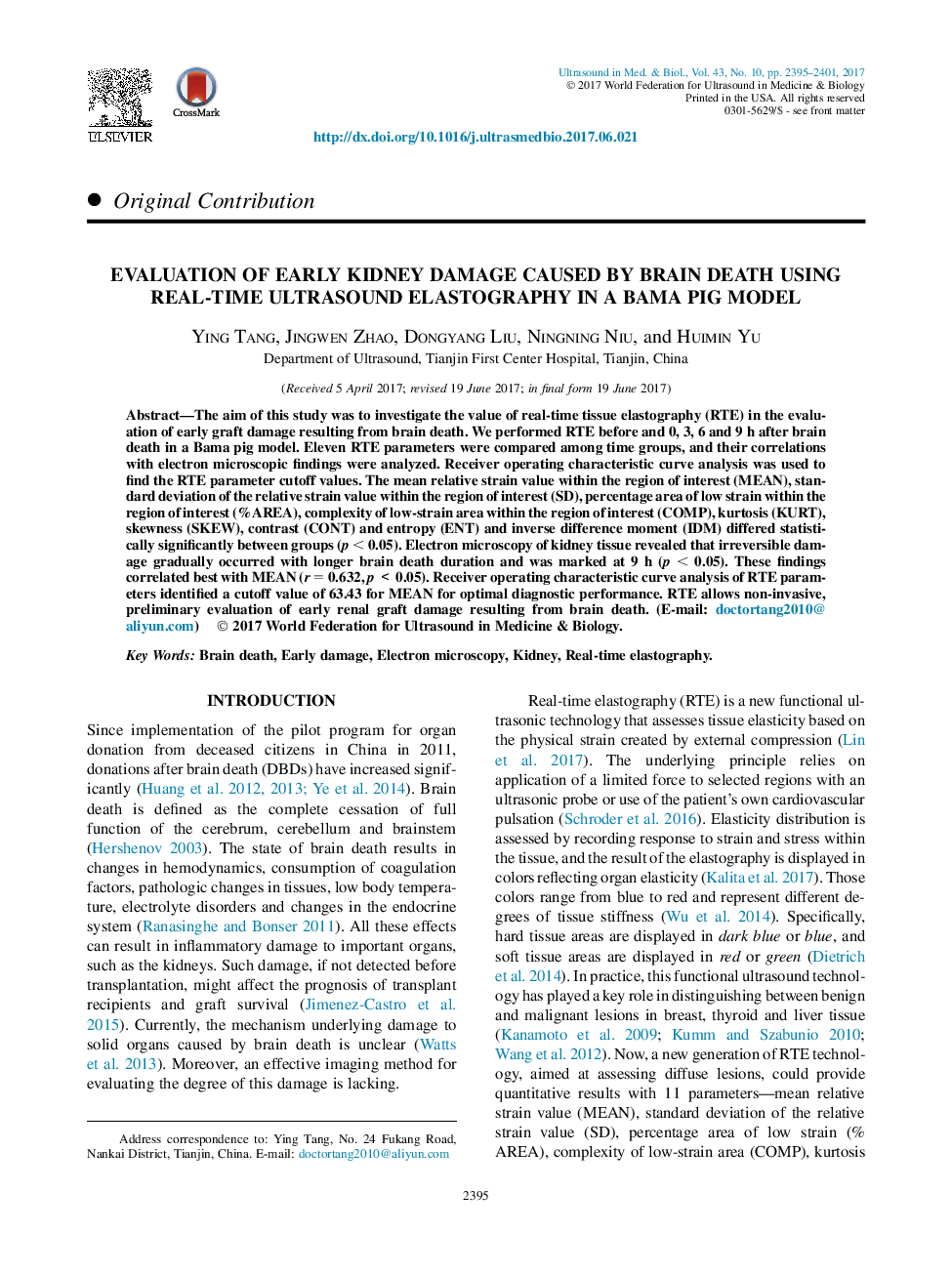| Article ID | Journal | Published Year | Pages | File Type |
|---|---|---|---|---|
| 5485573 | Ultrasound in Medicine & Biology | 2017 | 7 Pages |
Abstract
The aim of this study was to investigate the value of real-time tissue elastography (RTE) in the evaluation of early graft damage resulting from brain death. We performed RTE before and 0, 3, 6 and 9 h after brain death in a Bama pig model. Eleven RTE parameters were compared among time groups, and their correlations with electron microscopic findings were analyzed. Receiver operating characteristic curve analysis was used to find the RTE parameter cutoff values. The mean relative strain value within the region of interest (MEAN), standard deviation of the relative strain value within the region of interest (SD), percentage area of low strain within the region of interest (%AREA), complexity of low-strain area within the region of interest (COMP), kurtosis (KURT), skewness (SKEW), contrast (CONT) and entropy (ENT) and inverse difference moment (IDM) differed statistically significantly between groups (p < 0.05). Electron microscopy of kidney tissue revealed that irreversible damage gradually occurred with longer brain death duration and was marked at 9 h (p < 0.05). These findings correlated best with MEAN (r = 0.632, p ï¼ 0.05). Receiver operating characteristic curve analysis of RTE parameters identified a cutoff value of 63.43 for MEAN for optimal diagnostic performance. RTE allows non-invasive, preliminary evaluation of early renal graft damage resulting from brain death.
Related Topics
Physical Sciences and Engineering
Physics and Astronomy
Acoustics and Ultrasonics
Authors
Ying Tang, Jingwen Zhao, Dongyang Liu, Ningning Niu, Huimin Yu,
